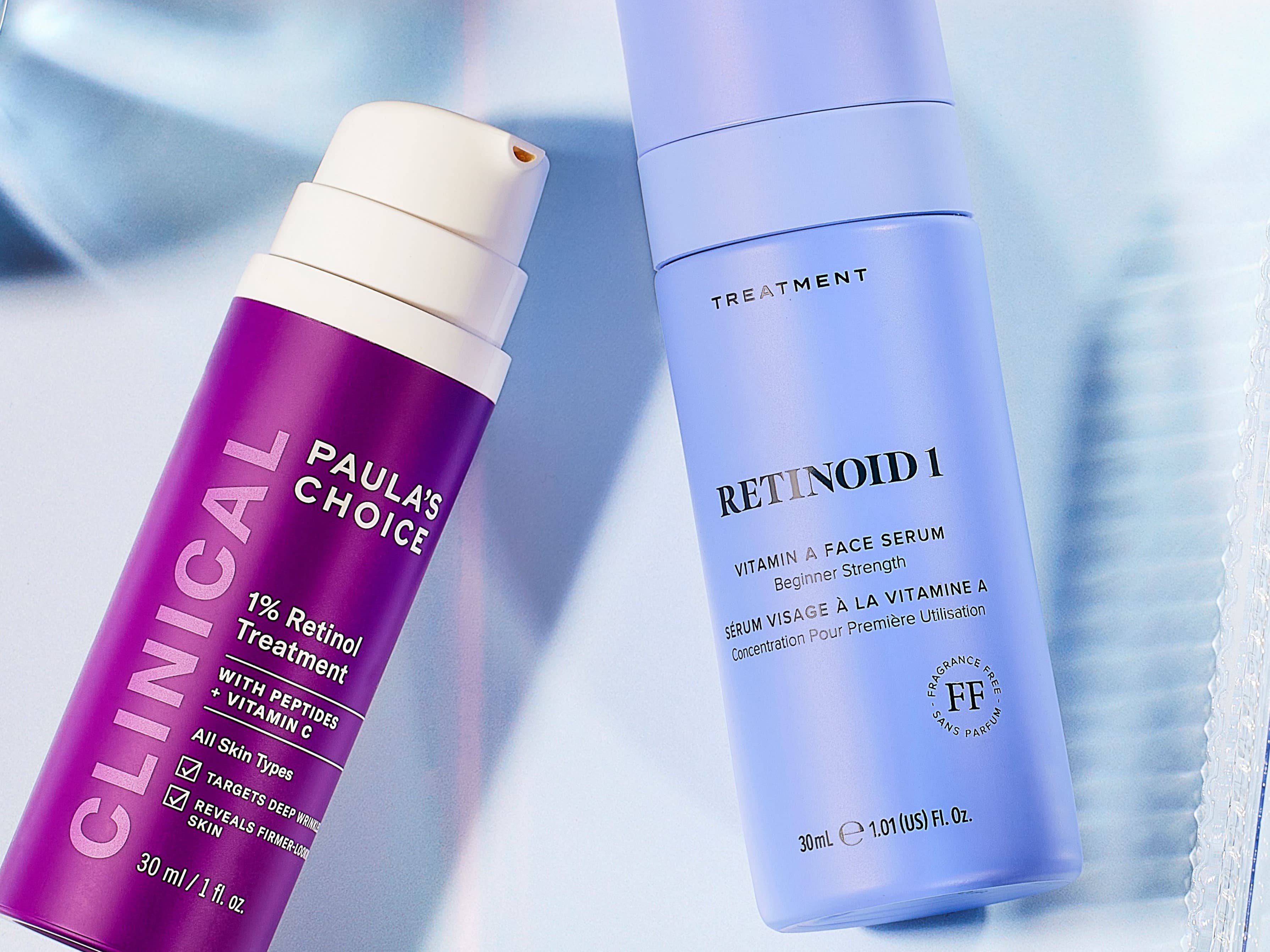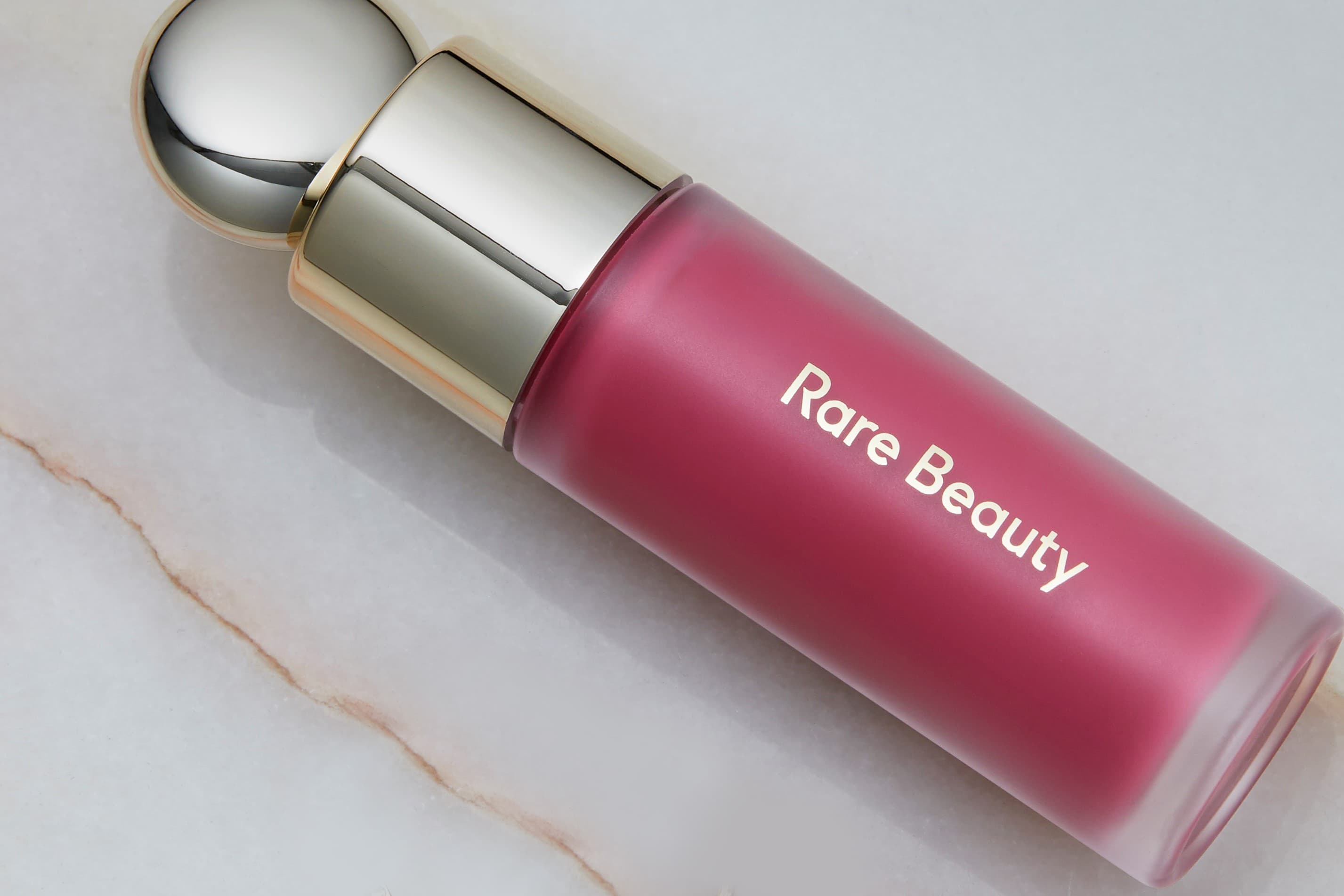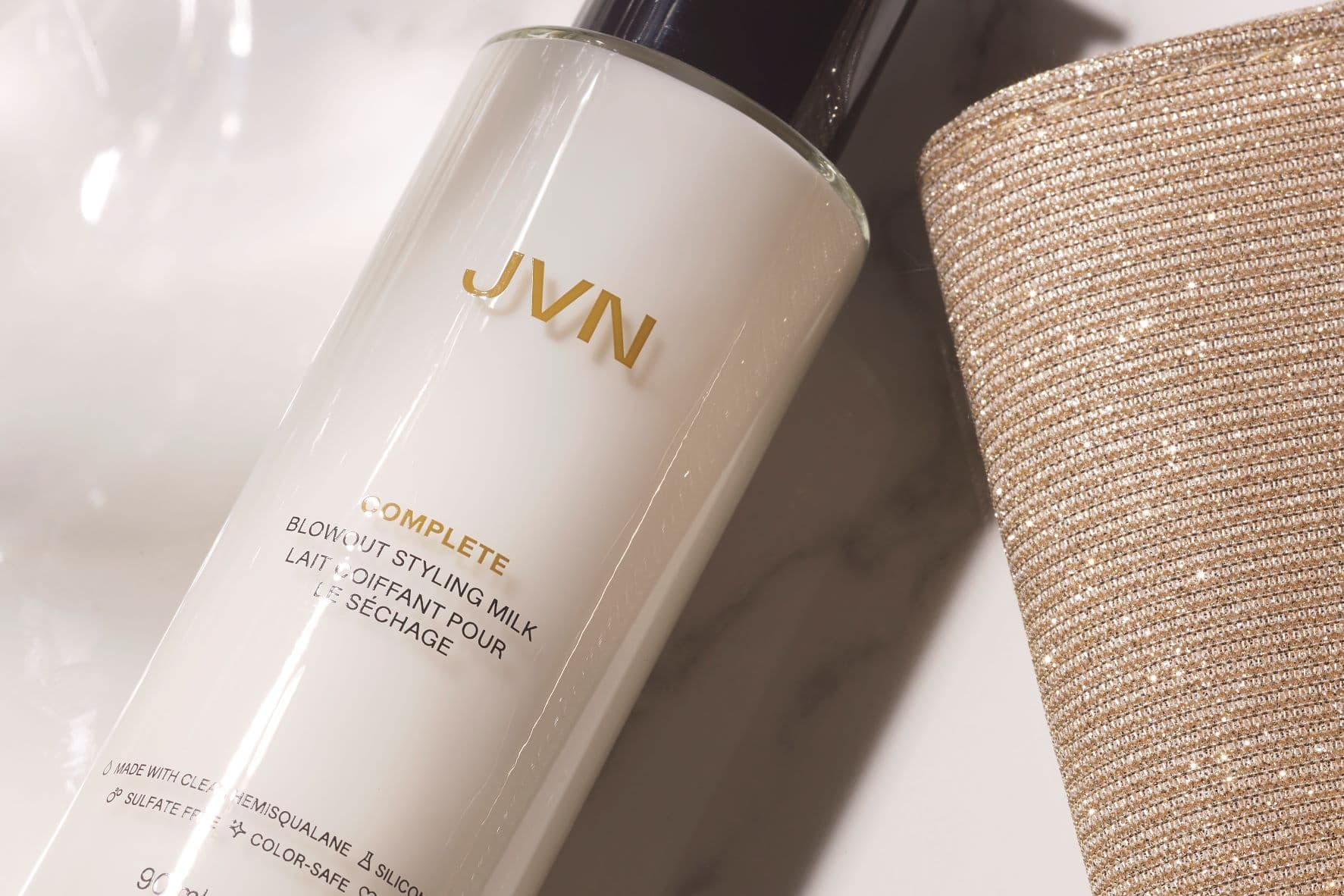What’s The Difference Between Retinol and Retinoids?

Retinoids used to be very tricky to stabilise in formulas though and so retinol was used more commonly, which is why dermatologists and skin experts often refer to retinol as the gold standard of skincare (alongside the list of skin-boosting benefits mentioned above!).
“Retinol has many benefits and is a particularly good ‘booster’ ingredient to treat skin needs,” says Sophie Anne Perry, a beauty industry educator and practitioner, and author of The Natural Facelift. “I personally love a mild retinol, letting it work over time, not causing too much irritation from the offset, as I am a firm believer in not disturbing skin too much too fast. Retinol should assist and boost skin in its own good work.”
What is retinol?
As this is a comparison piece between retinol vs retinoids, we wanted to clarify again that retinol is a form of retinoid. Retinols have one function, to convert in your skin to retinoic acid. All types of retinol do this – including prescription only vitamin A such as Tretinoin – with the main difference between them being how quick they convert.
According to skincare expert, Sam [By The Counter] all types of retinoids are “looking to have an effect as close as possible to prescription vitamin A. The goal is to improve surface texture, assist with the appearance of large pores, blemishes, pigmentation, and improve the look of fine lines and wrinkles. Vitamin A hits all the bases.”
The slower the conversion, the less irritation, the longer it will take for results to surface, whereas the quicker the conversation, the greater the chance for irritation, the quicker you will see results. Knowing this will help you navigate the plethora of retinol options available to you.
Retinol (and the other types of retinoids) can initially cause some dryness and sensitivity as your skin becomes accustomed to the increased cell turnover, you’ll find that many brands formulate the active ingredient alongside skin nourishers like niacinamide and ceramides, and hydrators like hyaluronic acid and glycerin.
What are retinoids?
The most common types of retinoids you’re likely to see listed on a label for non-prescription products are, retinaldehyde (found in NATURIUM Retinaldehyde Cream Serum 0.10%, € 40,00), retinoate (found in Skin Rocks Retinoid 1 - Vitamin A Face Serum, € 80,00), and, of course, retinol (found in Paula's Choice 1% Retinol Treatment, € 15,00).
As we’ve established, retinoids can appear in a variety of different forms, each impacting the skin slightly differently. Here’s a summary…
What are the different types of retinoids?
Retinoid Ester: for very sensitive skin
As the mildest form of retinol, a retinoid ester or retinol ester is ideal for anyone with sensitive and reactive skin, including acne, rosacea, and those with a weakened skin barrier. It converts into retinoic acid very slowly meaning even the most sensitive skin should tolerate it well. The results are slower to arise but are just as impressive. Try Sunday Riley A+ High-Dose Retinoid Serum, € 80,00.
Retinal (Retinaldehyde): for vitamin A newbies
Retinal coverts more slowly into retinoic acid than many other types of retinol, making it gentler on skin. Retinal is the preferred choice of Sam [By The Counter] as it’s closer in the conversion process. “In my experience, retinal has also been far less aggressive on my skin than equivalent strength retinol. Ingredient suppliers of retinal suggest that avoiding the extra conversion step is what makes it less irritating.” Though some dryness and sensitivity may still occur, the bedding in process is usually far easier to manage. The Crystal Retinal range from Medik8 is a great place to start. The range begins at a lower concentration, building up to a more potent dosage of retinal, making it a good programme to follow. Start low with Medik8 Crystal Retinal 1 Stable Retinal Night Serum, € 51,75, and work your way up to Medik8 Crystal Retinal 10 Stable Retinal Night Serum, € 102,35, as your skin adjusts to the active ingredient.
Retinol: ideal for more tolerant skin
Working a bit quicker to convert into retinoic acid, retinol is a good choice for those who have unreactive, resilient skin. The results are faster to surface, making the benefits more impressive. Drunk Elephant A-Passioni Retinol Cream, € 30,00 combines 1% retinol with lipid replenishing passionfruit, apricot, and jojoba oils to help nourish skin and deter sensitivity.
Retinoate: For seasoned retinol users
This next generation retinoid is a hybrid ingredient of both retinol and retinoic acid so it’s quick to convert in the skin and perfect for those who are already familiar with using vitamin A and so have built some tolerance to the ingredient. In Medik8 r-Retinoate Intense, € 263,35, it has been combined with retinaldehyde to boost regeneration and soften lines and wrinkles. It also contains a ceramide complex to help reduce sensitivity while your skin adjusts.
How to choose between retinol and retinoids
Retinol is one of those no-brainer ingredients because everyone, regardless of their skin tone, type, or concern, can benefit from it. How well your skin adapts to it and the level of benefit really depends on matching your skin to the right retinol, and then using it appropriately and consistently.
“The industry has evolved retinols in terms of strengths and formulations so absolutely everyone can use it,” says Sophie. “You don’t need to grab a high percentage retinol to see the results as many brands have curated wonderful formulations that have a great percentage and, for example, are encapsulated with many hydrating ingredients such as hyaluronic acid, to minimise the drying effects to the skin. It’s the same usage and effects, but less downtime.”
Refer back to our retinoid summary. If you are new to retinols or have very reactive, and challenged skin, then start at the ‘slower’ end of the spectrum: the retinoids that covert slowly in the skin to retinoic acid. These are your retinoid esters and retinaldehydes or retinals.
If your skin is resilient and rarely reacts or flares up, then you can start with a retinol. Once your skin has adapted well to retinoids, then graduate up to a retinoate which combines retinoids. Wherever you start, you should ease your way in.
How Important Are Retinoid Percentages?
While percentages are rarely useful in giving you the full idea of a product’s function, it can be a handy guide for retinoids in particular. It’s generally considered that retinoids in the 0.03%-0.06% range to be the common or intermediate range. Anything higher is probably best left for a bit later in your retinoid journey.
All of my favourite dermatologists talk about consistency being more important than strength. So, if you’re concerned, start lower, but use it more often.
How to use retinol and retinoids in your skincare routine
Whatever form you’re using it in, retinol is a potent ingredient, and your skin may take some time to adapt to it. While it’s tempting to start using it daily with the aim of more impressive results, you’ll likely just anger your skin and cause inflammation. Sophie advises, “If you’re new to retinol, introduce it into your routine just two or three times a week to begin with.”
Cycling your retinol will help settle your skin so ensure you’re only use other harsh actives, like acids, on the days you’re not using your retinol. Sandwiching the retinol with hydrating products containing barrier strengthening ingredients, will also keep irritation to a minimum.
“Apply a skin barrier strengthening cream containing ceramides first, wait a couple of minutes and then apply your retinol, and follow with a final application of cream,” explains Sophie. “This sandwiching technique helps to buffer the intensity of the retinol until your skin is used to its effects.”
Retinol can increase your skin’s sensitivity to the sun so only use it in the evening and be sure to following with a high factor broad-spectrum SPF the next day.
What you need to remember on the difference between retinol and retinoids
There are ‘retinol alternatives’ such as bakuchiol and Biden Pilosa, that have been noted to have a similar effect on skin as retinol, and if you’re still reluctant to try retinol they can be a good substitute, but they won’t deliver the same lasting and noticeable results as a vitamin A. Retinol may seem like a complicated topic but you only need follow a few essential pieces of guidance to see plumper, smoother, more evenly toned, and healthier skin for the long-term:
• Remember, ‘retinoid’ is the category under which all vitamin A derivatives shelter. They vary in intensity from retinol ester through to retinoate and where you start depends on the tolerance of your own skin.
• Sandwich your retinol between layers of barrier strengthening cream (try Drunk Elephant Bora Barrier Repair Cream, € 72,00.)
• Start off using it two or three times a week and increase usage as your skin adapts.
• Only use retinol at night and follow with SPF in the morning.
Read More
• Our Beginner's Guide to Retinol• Can you use vitamin C with retinol? • The Best Retinol Serums and Creams for Every Budget
• How to do the Retinol Sandwich Method




